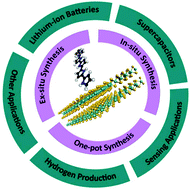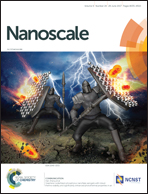Two-dimensional transition metal dichalcogenide/conducting polymer composites: synthesis and applications
Abstract
The exploration of hybridizing transition metal dichalcogenide (TMD) nanosheets with other materials as a unique approach for engineering their properties has attracted considerable attention from the scientific community for both basic studies and numerous potential applications. Among the various kinds of functional materials in hand, the utilization of intrinsically conducting polymers (CPs) in the construction of advanced hybrid composites with TMD nanosheets is considered as a fascinating approach. In this review, we aim at providing a survey of the literature on recent progress in composites based on 2D TMD and CPs. In this regard, we first discuss the different synthetic strategies used for the fabrication of two-dimensional transition metal dichalcogenide/conducting polymer (2D TMD/CP) composites in detail. Subsequently, we demonstrate the state-of-the-art advances in the utilization of these novel composites in promising applications such as energy storage, sensing devices, hydrogen production and so on. Finally, we also highlight some perspectives on the major challenges and future directions in this field of research.



 Please wait while we load your content...
Please wait while we load your content...